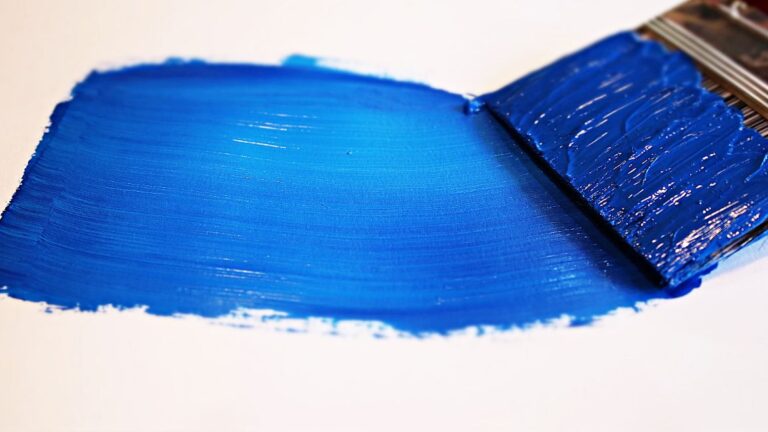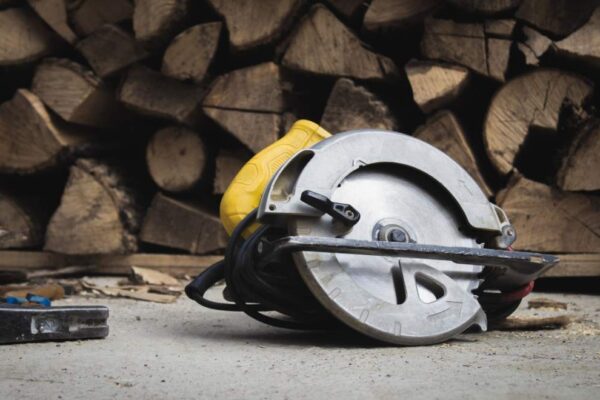After finishing your first project, properly cleaning your paintbrush can make the subsequent uses much more challenging. Therefore, taking the extra two minutes to clean your paintbrush will help you finish a perfect product on schedule. You can find out how to clean your paintbrush by reading this article.
How To Clean Paint Brush
Remove The Wet Paint From The Brush
In the long run, learning how to properly clean paint brushes can help you save money and enhance the painting process. Furthermore, the steps are simpler than you might imagine. Let’s start cleaning paint brushes right away so they’ll be in good condition for years to come.
- Use high-quality brushes that are appropriate for the type of paint you’re using before you start painting. Apply latex paint with nylon, polyester, or natural paint brushes, and oil paint with synthetic brushes. Cleaning up will be simpler as a result, especially after learning how to clean oil paint brushes.
- A good rule of thumb for brushwork is to only load the brush with two fingers’ worth of paint at most. The less unnecessary paint that gets on the brush, the less paint you’ll have to remove later.
- Remove as much paint from the brush as you can after painting, either on the surface, you painted, the rim of the paint can, or on a cloth, paper towel, or piece of newspaper.
- To gently remove the paint from the bristles, try using a brush comb as an additional option.
Clean The Brush With Solvent
The majority of interior (and even some exterior) walls are excellent candidates for water-based paint, such as acrylic or latex.
If you’ve used latex or acrylic paint, you can quickly learn how to clean acrylic paint brushes because it produces fewer odors and is simpler to clean. Warm water and mild dish soap are all you will need to clean your brushes.
The correct solvent for the kind of paint you’ve been using should be used to clean the brush. If you used oil-based paint, you’ll be using mineral spirits or turpentine to clean your brushes.
Oil-based paint forms a non-breathable coating because of the resin it contains, making it ideal for areas like molding, trim, and banisters. The only drawbacks are stronger odors, a longer drying time, and a slightly more difficult cleaning process.
You should clean your brushes with denatured alcohol if you used shellac, which is excellent at repelling stains and rust. The following general instructions are for cleaning paint brushes that have been painted with oil or shellac:
- First and foremost, make sure to only use solvents in well-ventilated areas. In a plastic bowl or other small container, pour just enough of the solvent to completely cover the bristles. Avoid dipping a filthy brush into the solvent’s original container.
- Ten to thirty seconds are spent stirring the brush in the solvent.
- As soon as you’re done, wipe the bristles against the bowl’s side.
- Continue until no more paint is ejecting from the brush.

Rinse The Brush With Wate
- After cleaning the brush in the solvent, rinse it with lukewarm water to remove any leftover paint and the solvent. When learning how to clean paint brushes, water is always a good starting point.
- Rinse the brush either in a bowl of warm water or under running water. If necessary, put a few drops of liquid dish soap in the water or right on the bristles.
- Hold the brush with the bristles downward when rinsing under a faucet to prevent water from getting inside the ferrule.
- You can “massage” or rub the remaining brush residue with your fingers. Before handling the brush with bare hands, make sure all of the solvents have been removed from it.
- To remove any last traces of soap from the brush, rinse it in warm, soap-free water.
The ferrule, which connects the brush head to the handle, can expand and become loose if you use hot water, which could result in some bristles falling out. As a result, avoid using hot water.
Cleaning Paint-hardened Brushes
How remove dried paint from brushes can be difficult, but the effort is frequently worthwhile. It is worthwhile to learn how to clean paint brushes because doing so can prevent you from having to spend money on a new one.
- Put the paint-covered brush in vinegar and soak it there for an hour. Allow the bristles to soak for an additional hour if they don’t bend.
- After two hours, if it still needs to be loosening, put the brush head in a pot with vinegar, put the pot on the stove, and bring the vinegar to a boil. In the end, take it out of the heat and let it cool. Use a pot holder or tongs if necessary to carefully remove the brush.
- When bristles have cooled, remove them with your fingers or a brush comb.
- Repeat as necessary to thoroughly rinse away the water-loosened paint.
Tip: Try a commercial brush cleaner and follow the directions if vinegar is ineffective. More than 24 hours of soaking may be necessary for some brushes.
Dry And Store The Brush
There are a few techniques for drying out wet brushes.
- Shake the brush ferociously over a paint bucket, box of cardboard, or other containers.
- Alternately, spin the brush dry above a container using a brush spinner.
- Repeat as necessary.
- If there is any moisture left, blot it until the brush has dried on some newspaper, paper towel, or a clean piece of cloth.
- The brush should be laid flat or hung with the bristles downward for storage.
Advice: If at all possible, keep the packaging from new brushes and use it as storage. The brush’s original shape will be preserved thanks to the cover.
How To Clean A Roller Cover
For Latex/water-based Paints, Stains And Clears
Soon after using, take the roller cover sleeve off the painting frame. Never let the paint on the paint roller start to dry, and never leave the roller sleeve soaking in water or solvent. Use warm water and soap to wash.
Apply Brush and Roller Cleaner to the paint to remove it from the fabric. Always rinse with clear water after using a clean container and clean soapy water. To get the best results, quickly remove any excess water with a brush and roller spinner, and then let the roller cover air dry.
For Oil/solvent-based Paints, Stains And Clears
Following use, immediately clean your roller cover. When cleaning oil-based paints, varnishes, lacquers, and shellacs off of your roller cover, carefully follow the manufacturer’s instructions for choosing the right cleaning solvent (mineral spirits or paint thinner for paint and varnish, denatured alcohol for shellac, etc.).
Never clean in the sink without first drying. Dip the cover into the cleaner the paint manufacturer has recommended. It should be cleaned up before being rolled out on a paint tray with a liner.
Repeat this process as necessary, using fresh cleaning solution and clean containers, to thoroughly clean the roller cover. Before using it again, let the cover completely dry.





